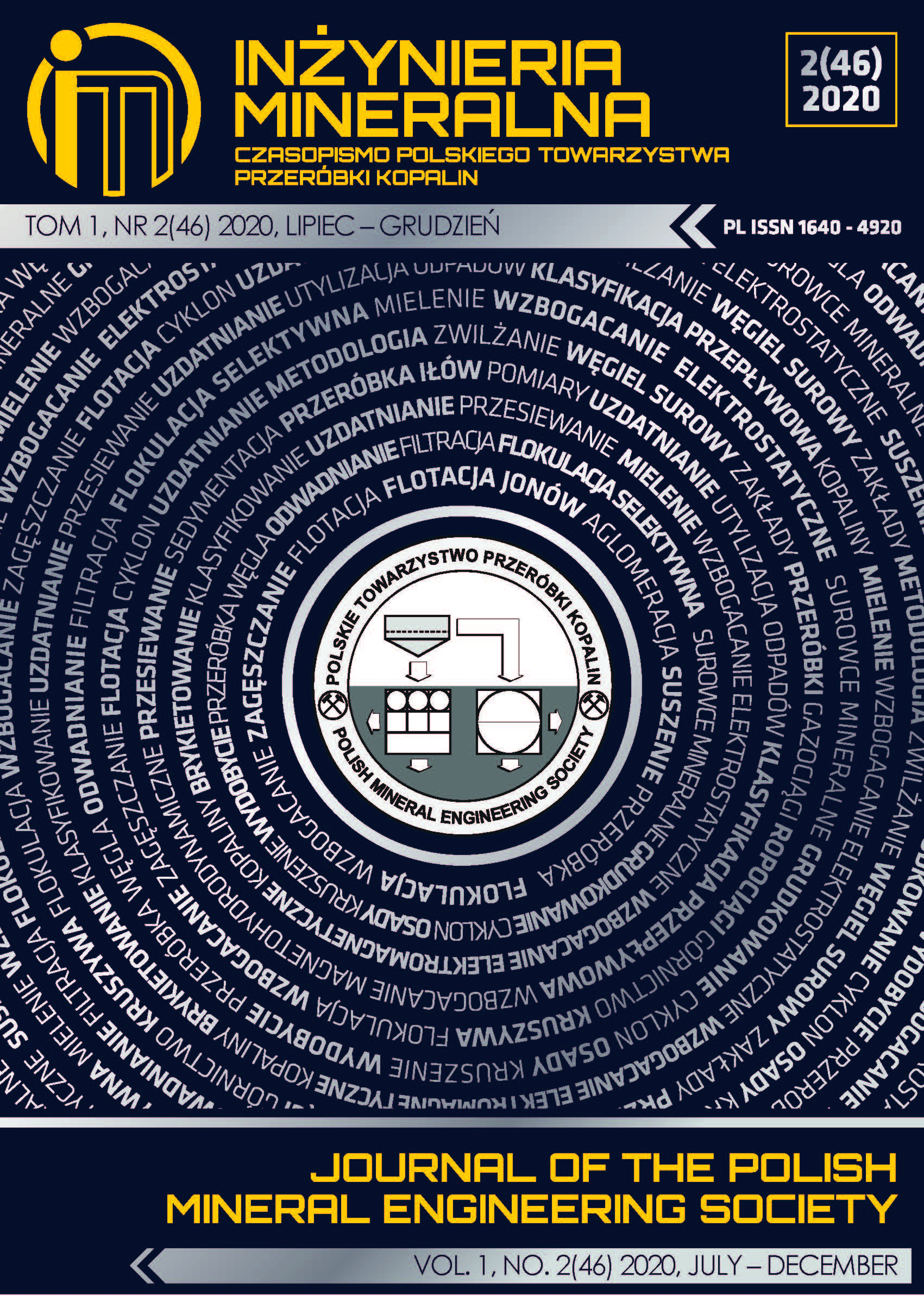Study of Suitable Washing Flowsheets For High Ash Coals of Nui Hong Coal Mine
Abstract
Current high ash coal stockpile of Nui Hong Coal Mine is estimated at about 1 million tonnes. This increasingly stockpiled coal is not sellable and disposable due to the government regulations so that a problem related to space and environment limitations becomes more serious. This report presents the results of the study on washability of Nui Hong high ash coals and proposed suitable flowsheets for washing this type of coals. Basic characteristics of the coals include High ash content of over 55%; High moisture of above 20%, high rate of disintegration into finer particles in water, the high proportion of fine coals of the size fraction 0–6 mm; 30% or more of high ash superfine fraction -0.045 mm that contained mainly slime, clay and fine non-coal organic impurities. The results of particle size analysis and sink-and-float analysis of +1 mm coal sizes indicated that a 1–6 mm clean coal with ash content of less than 45% could be produced by a combination of coal feed crushing, washing and removal of 0–0.1 mm superfine particles. Flotation of the size fraction - 0.1 mm could produce a clean coal float with the ash less than 40%, provided that slimes should be removed before flotation. From results of the study, it was found that the most suitable flowsheet for washing of Nui Hong high ash coals should include crushing of the feed down to -6 (8) mm, washing by rotary scrubber screens to separate clean coal of 0.1–6 (8) mm, desliming of -0.1 mm fraction by spiral classifier before flotation. From the study samples with the average initial ash content of 55%, a common clean coal product with ash content of about 40–45% and with a yield of over 60% were obtained according to the proposed flowsheet. The quality of the clean coal matched with Vietnam coal quality standard as 6B grade fine coal (TCVN) so that it could be supplied to the local thermal power plants.
Copyright (c) 2020 Test

This work is licensed under a Creative Commons Attribution-ShareAlike 4.0 International License.
This journal permits and encourages authors to post items submitted to the journal on personal websites or institutional repositories both prior to and after publication, while providing bibliographic details that credit, if applicable, its publication in this journal.







.png)
